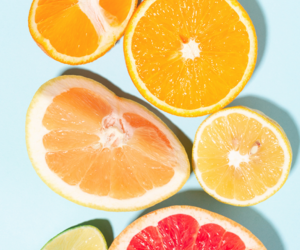By Ned Hancock, Chairman of the Florida Citrus Commission
When I plant a new tree in the ground, I plant it with the intention of producing oranges worthy of becoming Not-From-Concentrate (NFC) orange juice. Only the best oranges become the premium-quality, great-tasting juice consumers prefer and are willing to pay more to purchase. Fortunately for us, Florida Oranges are exactly that.
Nearly 80 percent of Florida processed oranges are sold as NFC OJ. Essentially, NFC OJ is Florida Orange Juice. In the 2019-20 season, Florida Oranges fueled the movement in NFC with nearly a 40-week supply sourced from Florida fruit vs. a five-week supply sourced from imports.
Today, NFC OJ drives 70 percent of value sales at retail. In the 2019-20 season this amounted to $2.2 billion in sales of the $3.1 billion total OJ sold. NFC OJ serves as a strong economic driver of the Florida Citrus industry by providing growers with the best return on investment.
The Florida Department of Citrus recognizes the economic importance of sustaining the NFC OJ market for Florida growers. To this end, the Department’s programs are driving sales through cutting-edge technology while maintaining traditional efforts, such as scientific research, to proactively increase awareness of the health and wellness Florida Orange Juice provides.
Shift to e-commerce
The current FDOC e-commerce program aimed at driving sales of 100% orange juice has delivered more than 91 million impressions and $2.4 million in attributed sales at a campaign ROAS of $5.24 since July – the majority of which is NFC OJ.
E-commerce, particularly in the grocery retail environment, is a relatively new practice and a departure from FDOC retail programs of the past. Thus, there has, understandably, been some confusion in our industry over what these numbers mean.
First, attributed sales are exactly that. The FDOC targets lapsed OJ buyers with ads that drive them to purchase 100% orange juice through retail partners, such as Instacart. When a consumer clicks on an ad and either purchases OJ immediately from the retailer or does so within a specific time period afterward, the resulting sale is attributed to the FDOC. The majority of these attributed sales are coming from consumers who have not purchased orange juice within the last 30 to 60 days. The ability to track attributed sales serves as an added layer of accountability as the FDOC only reports sales directly impacted by its campaigns.
Second, ROAS sounds complex but it’s actually a simple calculation dividing the amount of attributed sales by the total ad dollars spent. It’s used as a way of measuring the efficacy of FDOC campaigns and helps guide overall direction.
Further Scientific Support for OJ and Kids
On Thursday, the FDOC announced the release of a new study that shows drinking 100% orange juice is not related to excess weight gain in children and teens. The study, published in Public Health Nutrition and funded by an unrestricted grant through the FDOC, added to a growing body of research that suggests kids can benefit from regularly drinking orange juice without concerns about weight gain. In fact, this study reported higher orange juice consumption is associated with increased height for girls and increased trends for physical activity levels in both boys and girls.
The study, which has been shared with consumers, national media, and health professionals, is a further example of the long-standing history the FDOC has of highlighting the positive attributes of health and wellness of orange juice through scientific research.
What’s next?
The Florida Citrus Commission meets Oct. 21 in Bartow to decide how we proceed through 2020-21. Social distancing and other CDC guidelines will be in effect. Space in the meeting room will be very limited. As always, we encourage those who cannot join us in person to attend by phone at 1-888-585-9008, conference room number 258-577-262#.
Originally published in the Florida Citrus Mutual Triangle
